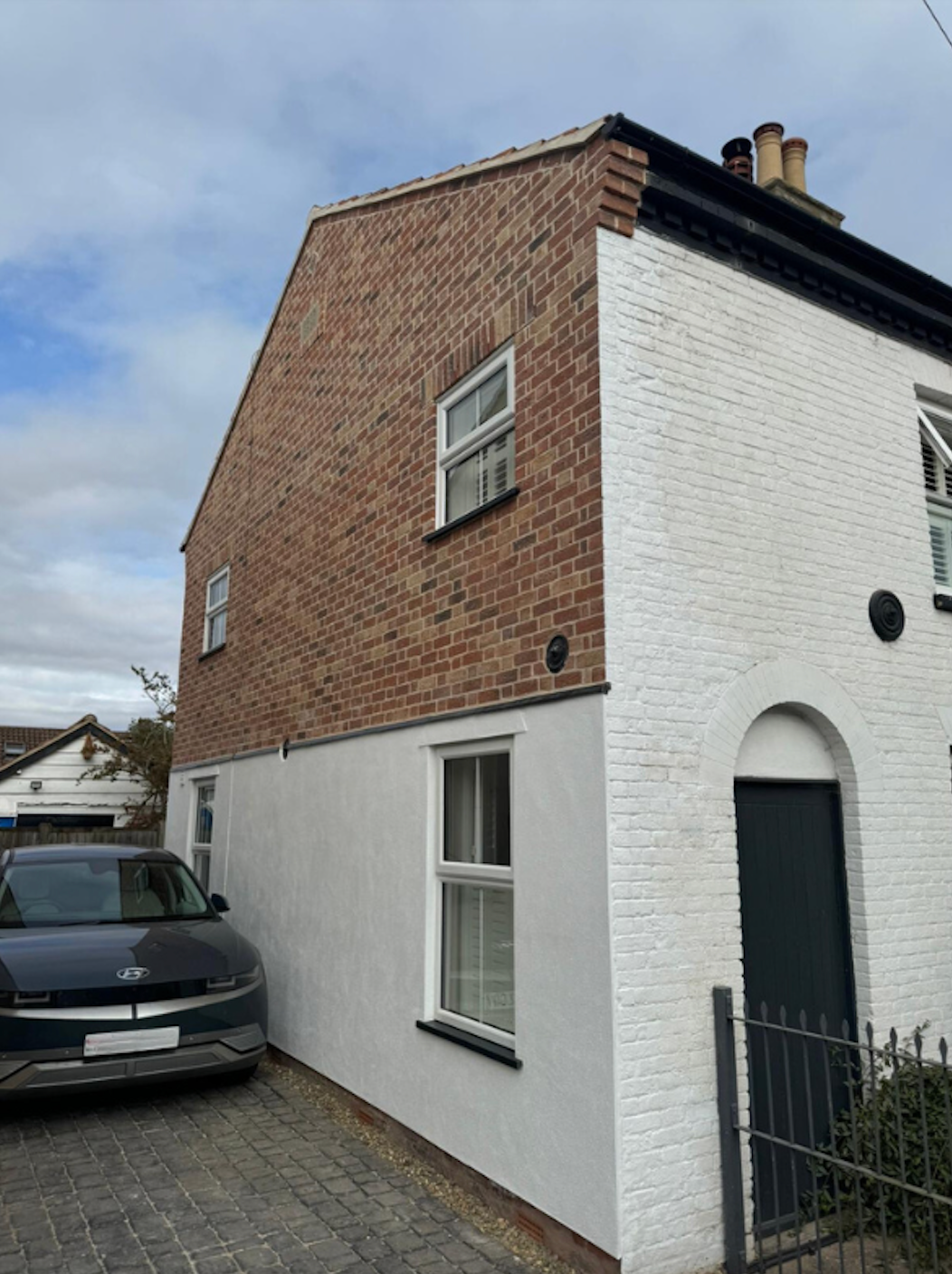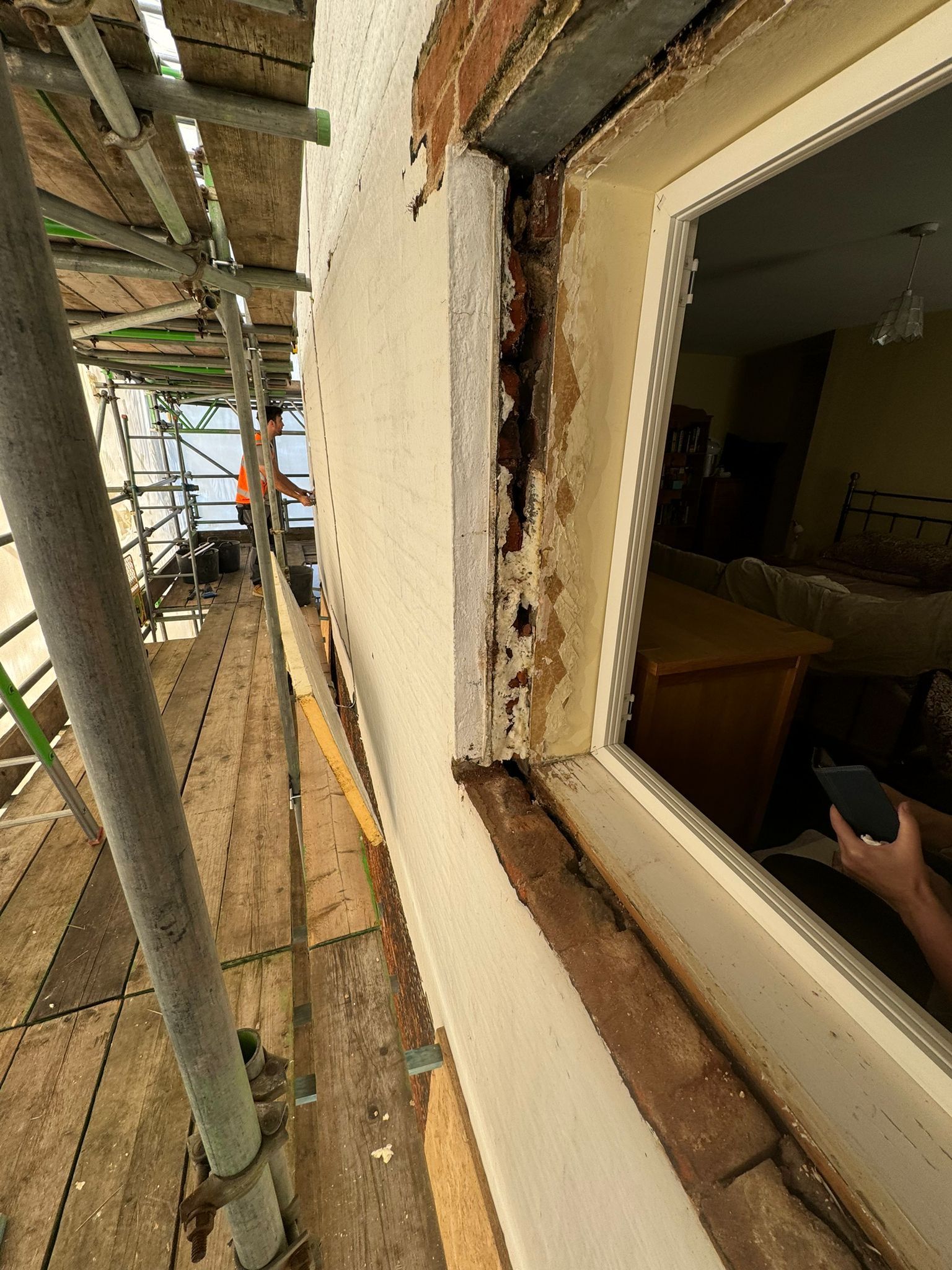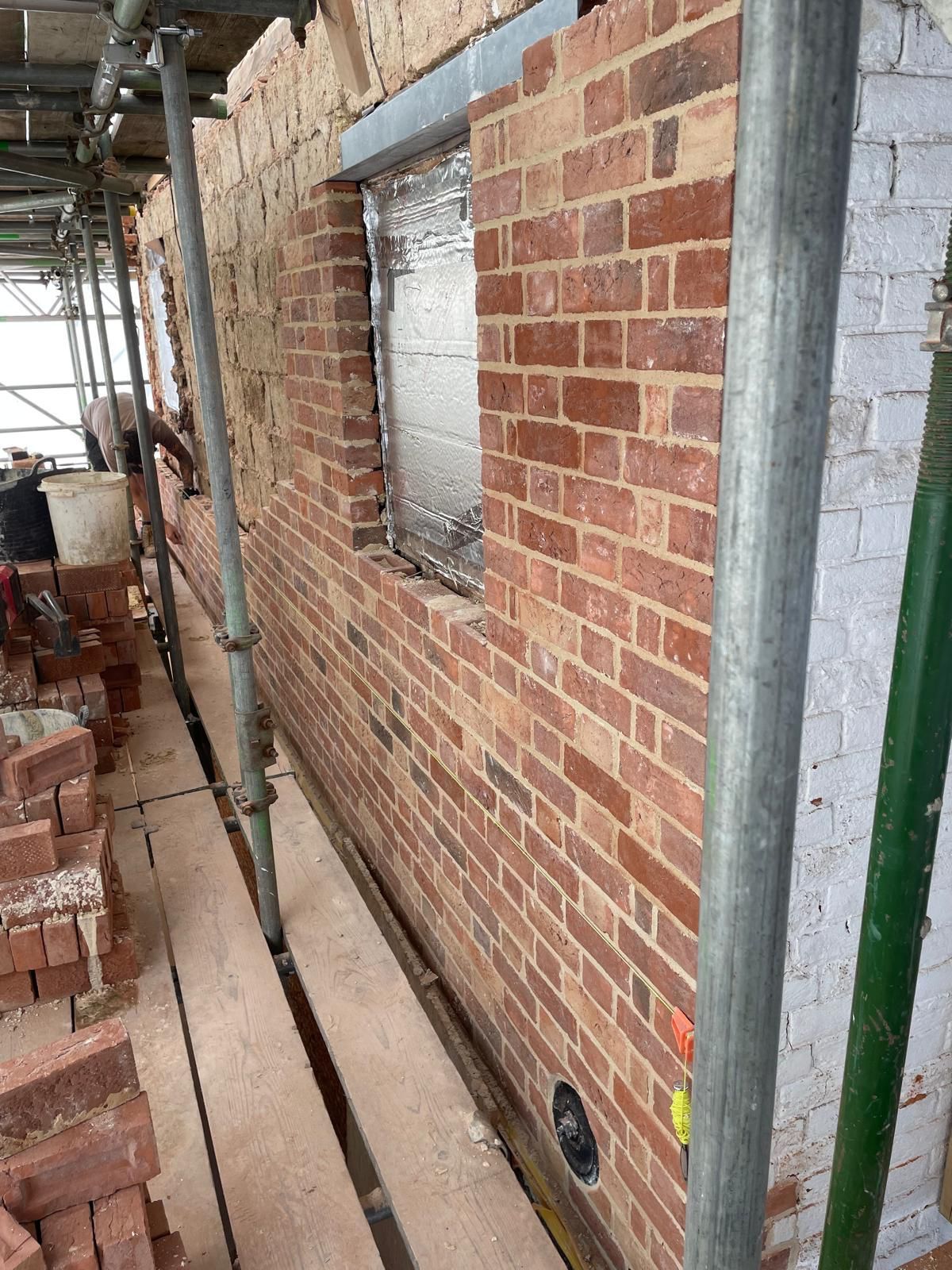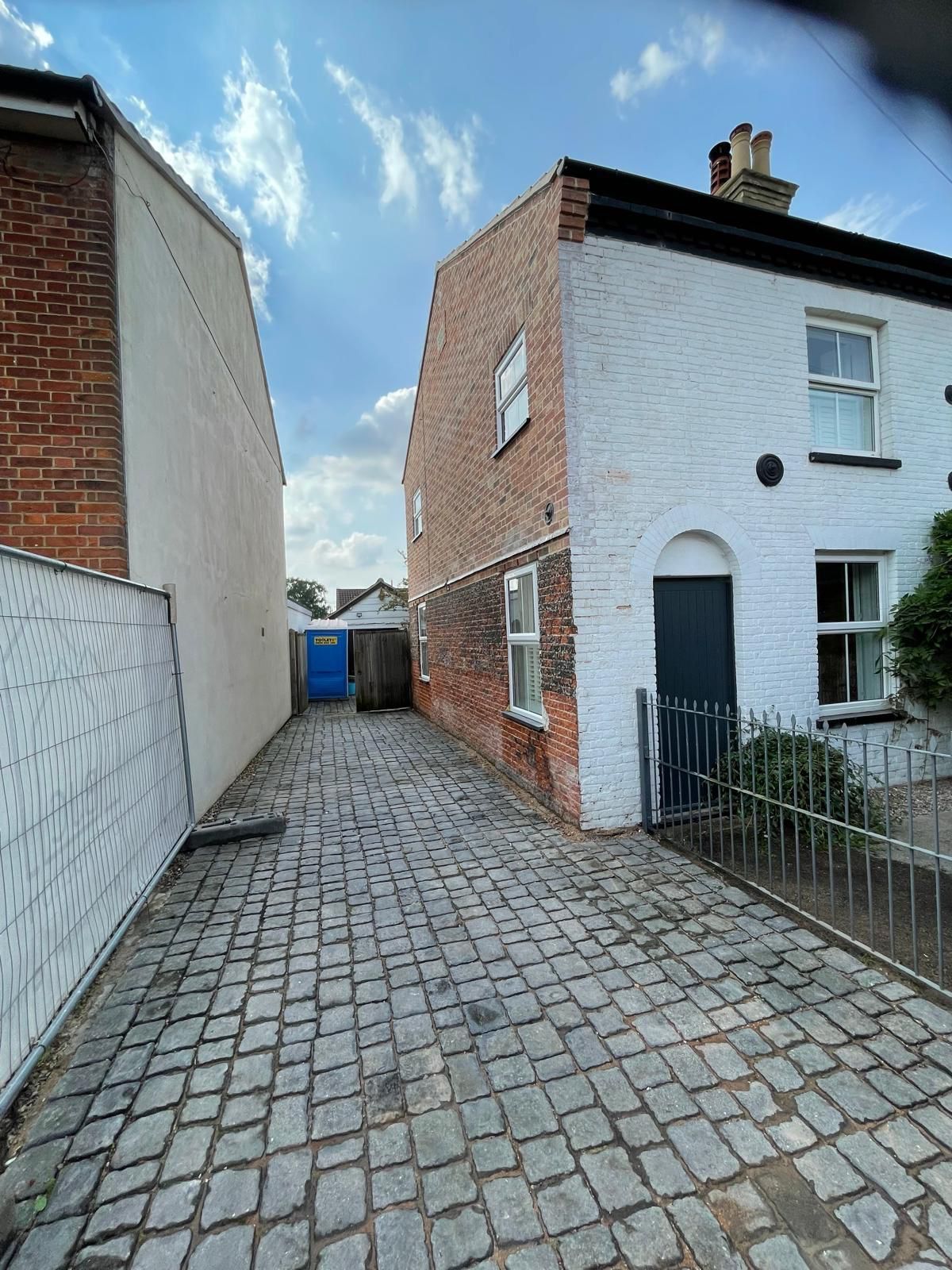Need assistance? Call us 01603 336 269 BLOG ABOUT CONTACT
Restoration and Damp Prevention on a Historic Southend Property: A Case Study
One of our latest projects involved restoring a historic property that was originally built using clay lump construction—a traditional method that presents unique challenges, especially when dealing with modern brickwork. Over the years, the external brickwork, which had been added long after the house was built, had never been properly tied into the clay lump walls. As a result, the brickwork began to belly away from the original structure, posing safety risks and contributing to a host of damp and moisture issues.

Initial Assessment and Safety Measures
We were called in to assess the problem, and it was clear that the gable end brickwork needed urgent attention. The brickwork was deemed unsafe due to its instability, so our first priority was to create a safe working environment while ensuring the clay lump structure was protected. Given the delicate nature of the clay lump, we instructed our scaffolding team to provide a full "up-and-over" shrink-wrapped scaffold. This precaution was necessary to shield the clay lump from the elements throughout the restoration process, preserving the integrity of the structure.
Once the scaffolding was in place, we carefully removed all the existing brickwork on the gable end down to the ground floor lintel height. This allowed us to rebuild the wall with modern materials while ensuring the structural safety of the property.
Rebuilding with Breathable Materials
To maintain the building’s ability to breathe—a critical consideration with clay lump—we rebuilt the gable end using red Fairfield antique facing bricks set in lime mortar. The choice of lime mortar is key for older buildings like this one, as it provides flexibility and allows moisture to escape, preventing further damage to the structure. Additionally, this time, we made sure the new brickwork was properly tied back into the clay lump walls, eliminating the risk of the brickwork bellying out again.
Not only did this solve the structural issue, but it also addressed the long-standing moisture and damp problems caused by cracks in the brickwork that had allowed water to seep in. These issues have now been fully resolved, providing peace of mind to the homeowners.
Tackling Further Damp Problems at the Rear
The project didn’t end there. At the back of the property, we encountered additional damp problems, this time caused by improperly installed coping stones on the roof. Over time, water had been leaking through, damaging the bedroom below. To fix this, we removed all the existing copings and replaced any damaged brickwork. We also installed a wider lead flashing and finished the area with weathered anthracite grey copings. This will ensure long-term protection against water ingress and prevent future damp issues in the affected bedroom.

Internal Structural Repairs
Damp had not only affected the external walls but also compromised the internal structure. One of the main internal beams had begun to rot due to moisture exposure, so we installed a new structural beam to restore stability to the building. Additionally, the ceiling in the bedroom and hallway had been severely impacted by dampness, leading to their removal and replacement. These areas are currently being prepped for plastering and will soon be fully restored.


Final Touches and Project Completion
As we approached the final stages of the project, the lower part of the external walls was rendered with a lime-based render to finish off the exterior in a way that matches the property’s historic character, while providing modern protection against the elements.We initially gave the client an estimated project timeline of 8 to 10 weeks, but thanks to careful planning and efficient work, we were able to complete the project within just 7 weeks.
This project has been a rewarding opportunity to blend traditional building techniques with modern solutions, ensuring the long-term preservation and safety of this historic home. We’re pleased to have delivered on both safety and aesthetic fronts, while also addressing the client’s concerns about damp and moisture for the foreseeable future.
Copyright © 2025 BJC Construction Norfolk
Company number: 12817086, Registered Address: The Gatehouse, 85 Hall Road, Norwich, England, NR1 2PP
